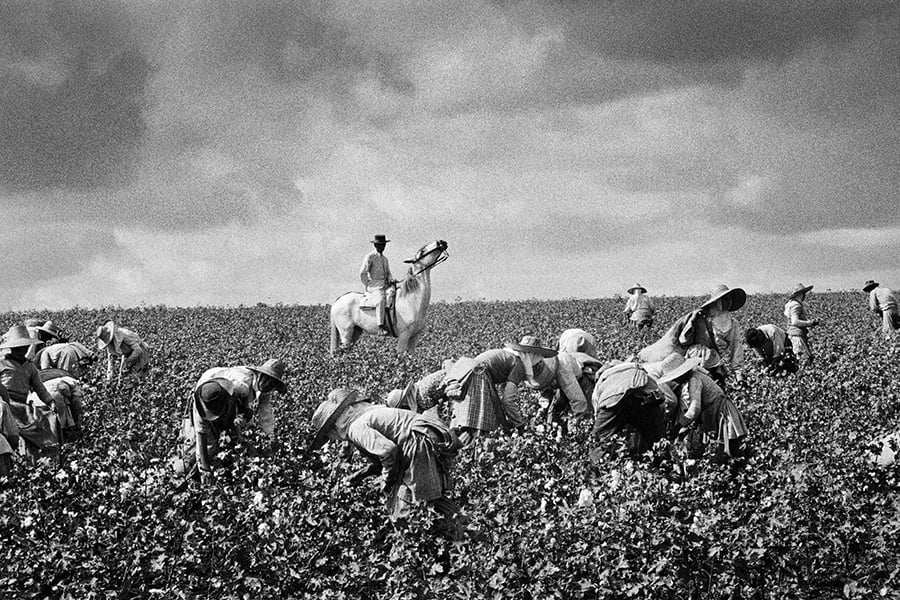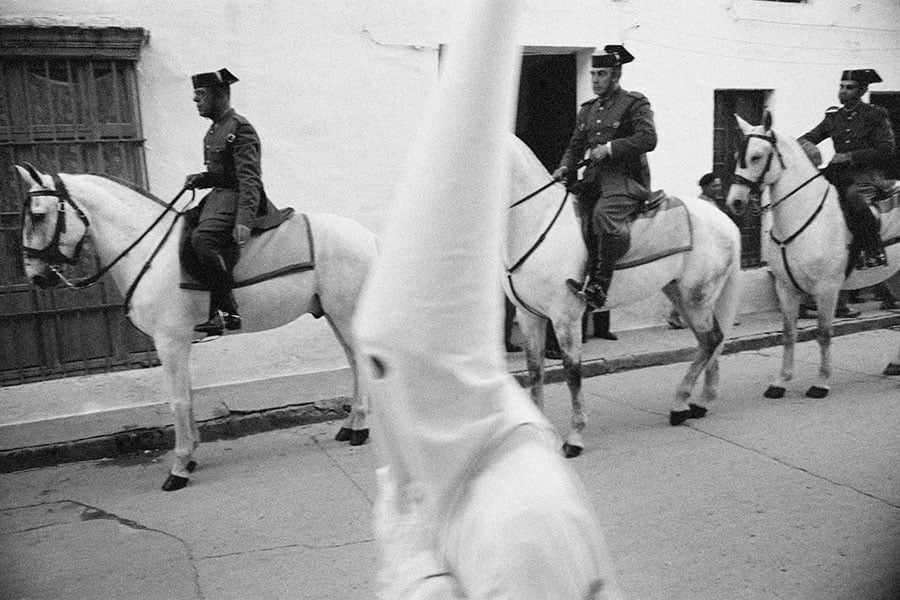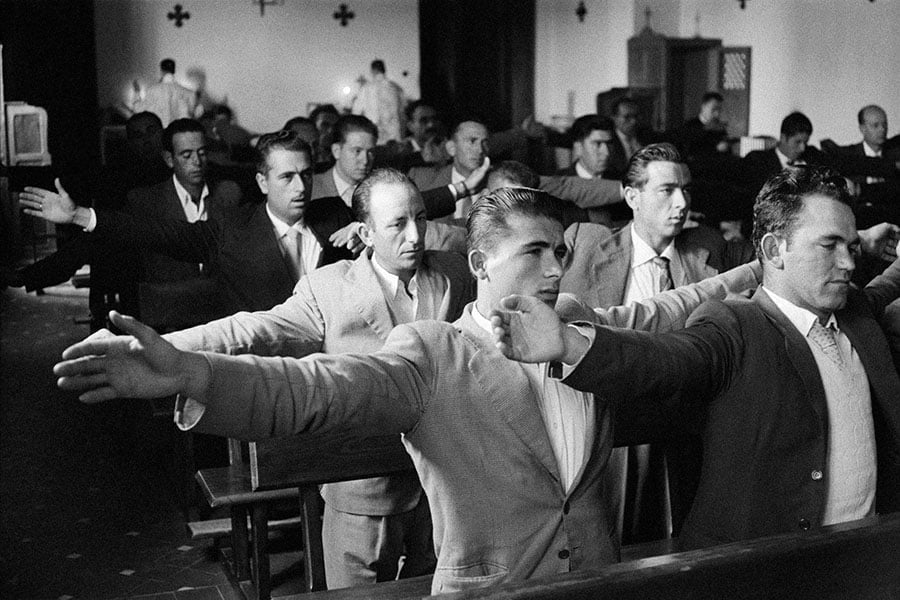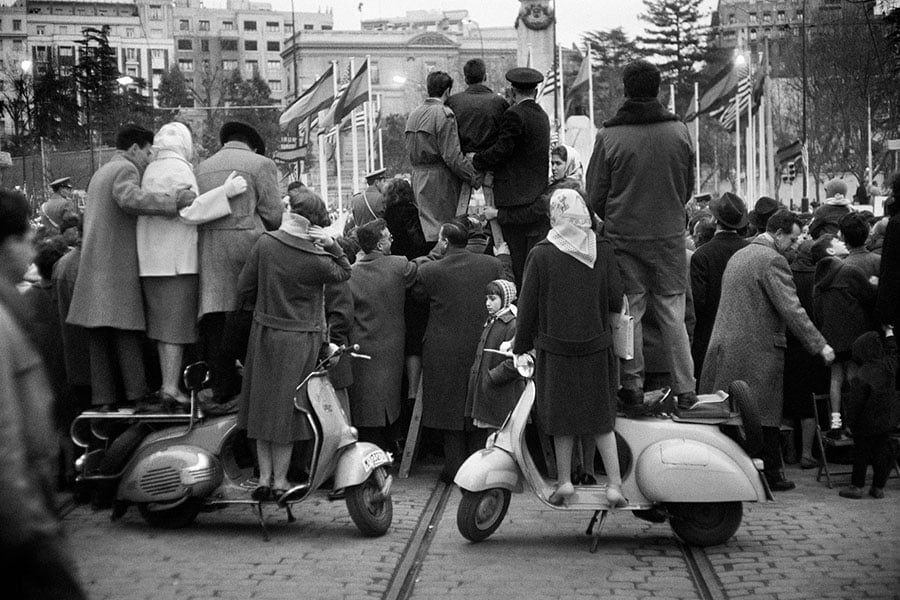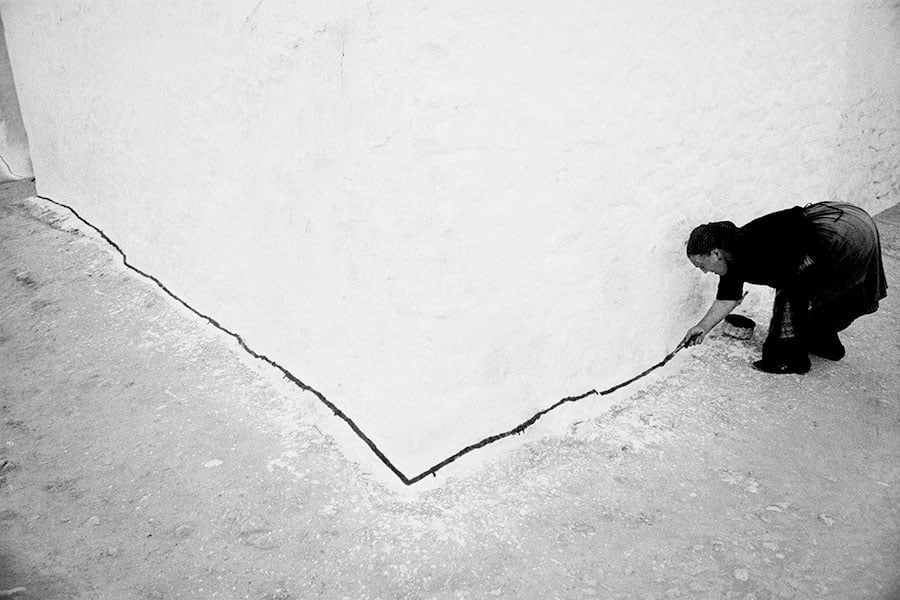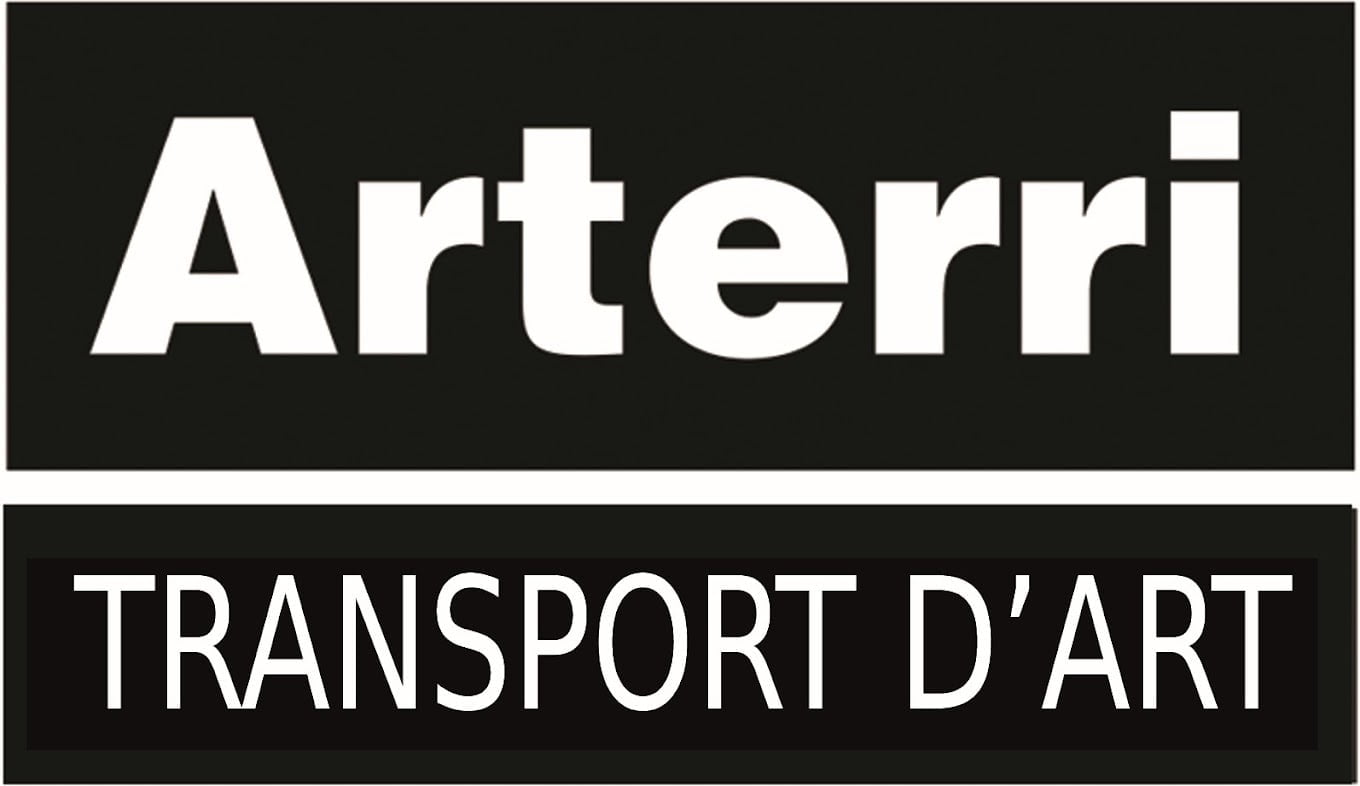Ramón Masats
Visit Spain
Sala l’Estrella
Between 1955 and 1965 Ramón Masats traveled across Spain with his camera and an obsession in his head: to portray the topics through which the official culture was blessing the patriotic values. He began his career as a contributor to several publications, and this trip allowed him to develop an innovative work that revolutionized the sad panorama of the official photography, which was still entangled in its dependence on the aesthetic rules that the classical order had imposed on the new discipline.
Masats’ work coincided with the end of the autarky period under Franco’s regime and the subsequent opening up that was planned by the government. This opening up was facilitated by the establishment of the Ministry of Information and Tourism in 1951, as well as the National Tourism Plan in 1953. “Visit Spain” was the first official propaganda message that was used during this time.
During that era, although television was in its early stages of development, photography remained the ideal medium for recognition and self-exploration. Photographic reportage gained significant interest from people, and the best photographers were hired to capture the world through their lenses. The reportage format was consolidated, and photography received its ultimate exaltation in the renowned exhibition “The Family of Man,” curated by Edward Steichen and held at the Museum of Modern Art in New York in 1955.
In that same year, Spain was admitted to the United Nations, which marked the country’s first significant step towards international recognition. The urgent need to get out of the autarkic isolation and to solve the severe problems of development, turned tourism into the industry where all dreams and aspirations of progress could be a possible reality.
The government developed structures that facilitated the arrival of visitors and devised tourist plans that fueled the boom of the following decade. Borders were opened, transportation was promoted, and tourist slogans were created to define the country as unique and distinctive, with a focus on themes such as sun, bulls, dance, and gastronomy, all at unbeatable prices.
In this context, Masats embarked on his personal journey, focusing on traditional and folkloric rituals that he describes as cliché. His account paints a picture of a country trapped in material poverty, constrained by social norms, and bound by spiritual beliefs. Masats’ powerful imagery and ironic gaze exemplified the new imprint of documentary photography, where the photographer’s personality constructs a suggestion beyond the mere optical reality of the photographic image. The final interpretation of the image remains solely in the hands of the viewer. Masats’ photographic suggestions have successfully colonized our memories.
Text by Chema Conesa

Ramón Masats (1931, Caldes de Montbui, Barcelona). He discovered photography during his military service, through magazines such as Arte Fotográfico. He decided to join the Photographic Circle of the Casino of Tarrasa and the Photographic Society of Catalonia as an amateur. He met photographers such as Miserachs, Maspons and Terré, with whom he exhibited his first photographs, in 1957. That same year he moved to Madrid and exhibited there, while he did exhibitions in Barcelona and Almeria, as well. 1957 was the year of his professional explosion and his work on the sanfermines began to flourish. His membership in the AFAL group, which was led by Pérez Siquier, opened up the avenues for his recognition across Europe.
He entered the Real Sociedad Fotográfica of Madrid and traveled within Spain with orders for publications. Together with Ontañón, Cualladó, Paco Gómez, Leonardo Cantero and Rubio Camín, he created the La Palangana group, a kind of authentic and contestant branch of the official photography, perhaps the Madrid echo of the operating group AFAL.
In 1962 he published the book ¨Neutral Corner¨(Lumen) with texts written by Ignacio Aldecoa. That book was an editorial milestone for its excellent combination of literature and photographic language.
The following year he published a compendium of his work on the sanfermines. He received the Ibarra award for the best published book.
In 1964 he published the ¨Viejas Historias¨ of Castilla la Vieja, with texts written by Miguel Delibes. These three books constitute the maximum legacy of this first stage of Ramón Masats career as a renewer of the photographic language of reportage.
From 1965 to 1981 he dedicated himself to film and television production. He filmed the featured movie “Topical Spanish”.
He returned again to the world of photography to make with the publishing house Lunwerg, a collection of books, choosing color as a support. His photos now respond to the new record imposed by chromatism. The narrative force of his previous black and white stage is transformed into syncretions of color and form.
In 1999, he dedicated his first retrospective exhibition at the Círculo de Bellas Artes in Madrid. In 2001 he was awarded with the Madrid Photography Communuty Prize and in 2004 with the National Photography Prize.
Exhibition produced by the Subdirección General de Museos Estatales del Ministerio de Cultura y Deporte
And with the collaboration of Arterri




